Laboratory analysis of dust nanoparticles or how to find out how we breathe?
Today we will tell you about a unique method for the extraction and analysis of dust nanoparticles. Existing methods at the moment did not allow to analyze dust nanoparticles at the proper level, but the proposed P.S. The method by Fedotov and his colleagues makes it possible to solve a number of scientific, including environmental , problems.
We have prepared a large photo report, which in stages tells about the method of extraction of dust nanoparticles , with a capture of each stage of the experiment and the comments of the senior researcher at the laboratory, Mikhail Ermolin . Michael also gave an expert commentary, which outlines the essence of the method. At the end of this publication, you will find a comment by a graduate student on the need for the application and relevance of this method.
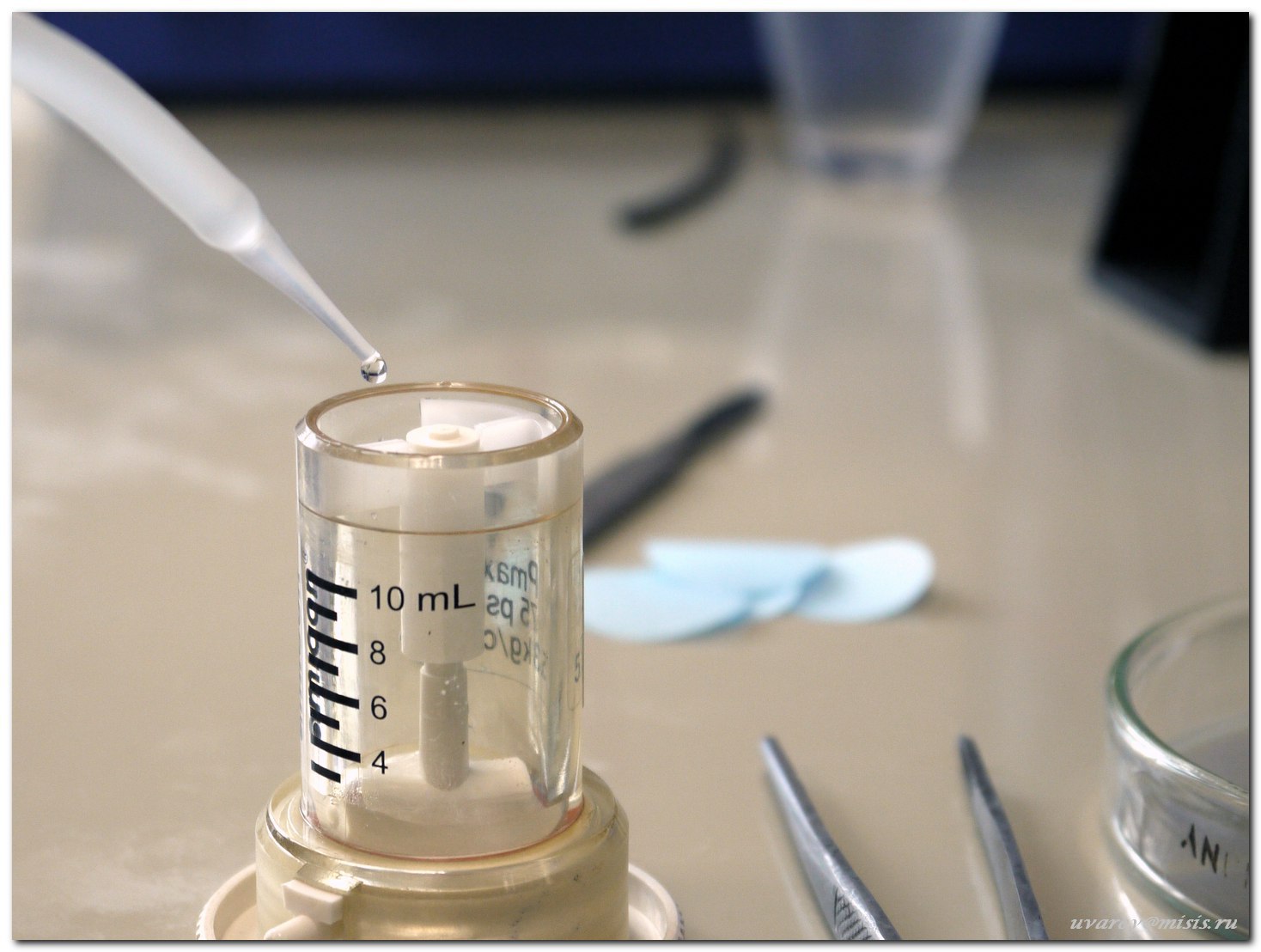
The laboratory for the separation and concentration of trace elements, micro- and nanoparticles for the development of combined methods for the chemical diagnostics of functional dispersed materials and environmental objects (RKHD FMiOOS) was created in NITU "MISiS" under the project TOP 5-100 under the guidance of a leading scientist P.S. Fedotova .
The main goal of the creation of the laboratory is the development of new highly efficient methods for the separation of trace elements, micro- and nanoparticles using the sorption processes and flow fractionation in a transverse force field at NUST “MISiS”, as well as the development of combined methods for the chemical diagnostics of functional dispersed materials and environmental objects.
1. Development of a fundamentally new analytical technology proposed by a leading scientist - the method of fractionation of nano-, submicron, and microparticles of technological and natural samples in a transverse force field in a rotating spiral column of an original design for their subsequent elemental and material analysis.
2. Creation of combined chemical-atomic-emission, chemical-atomic-absorption and chemical-mass spectral methods of inorganic analysis with improved metrological characteristics.
3. Development of methods for elemental and material analysis of fine particles of technological samples (including functional powder materials) and environmental objects (soil, dust and ash) using the proposed separation and concentration methods.
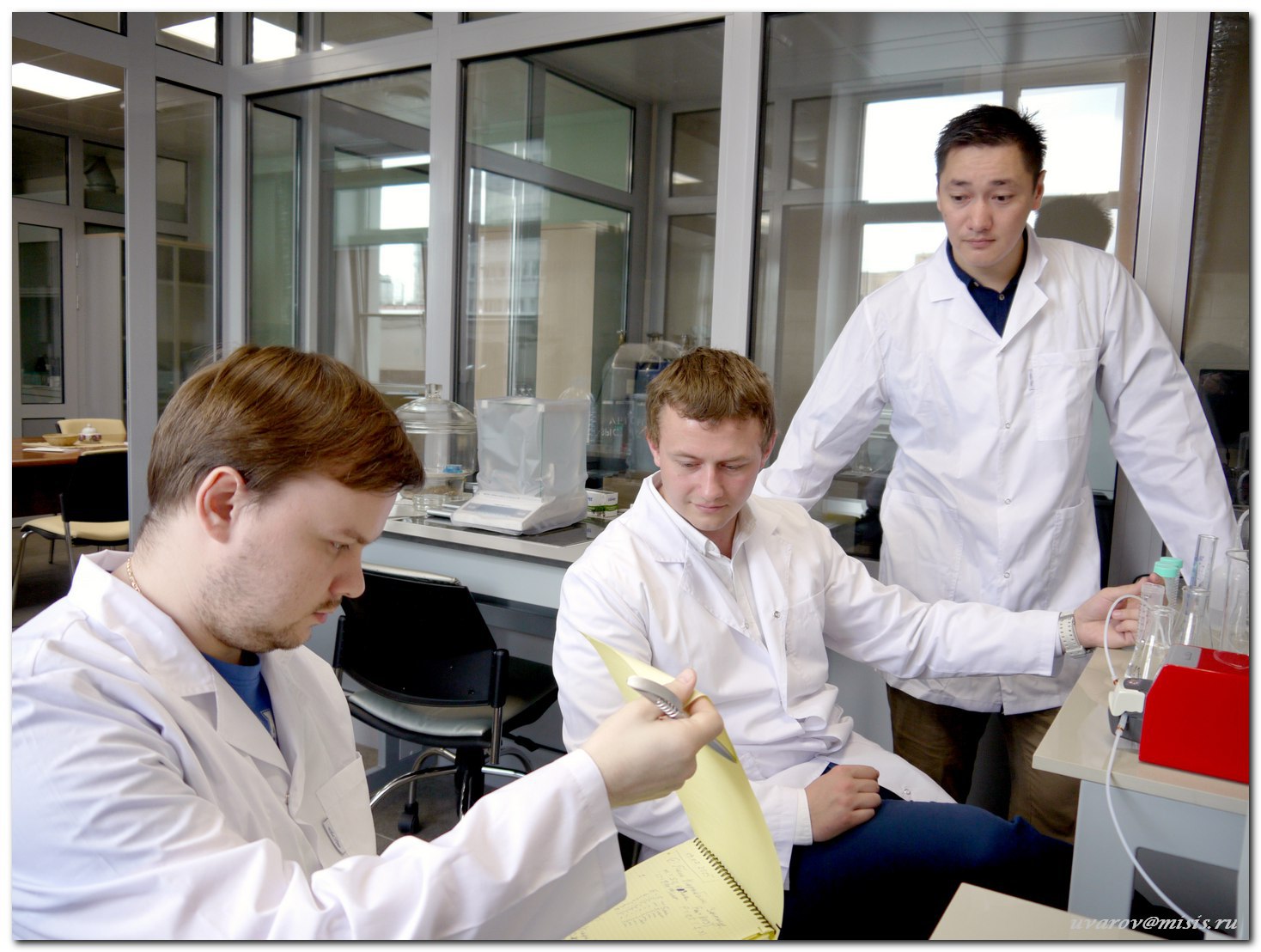
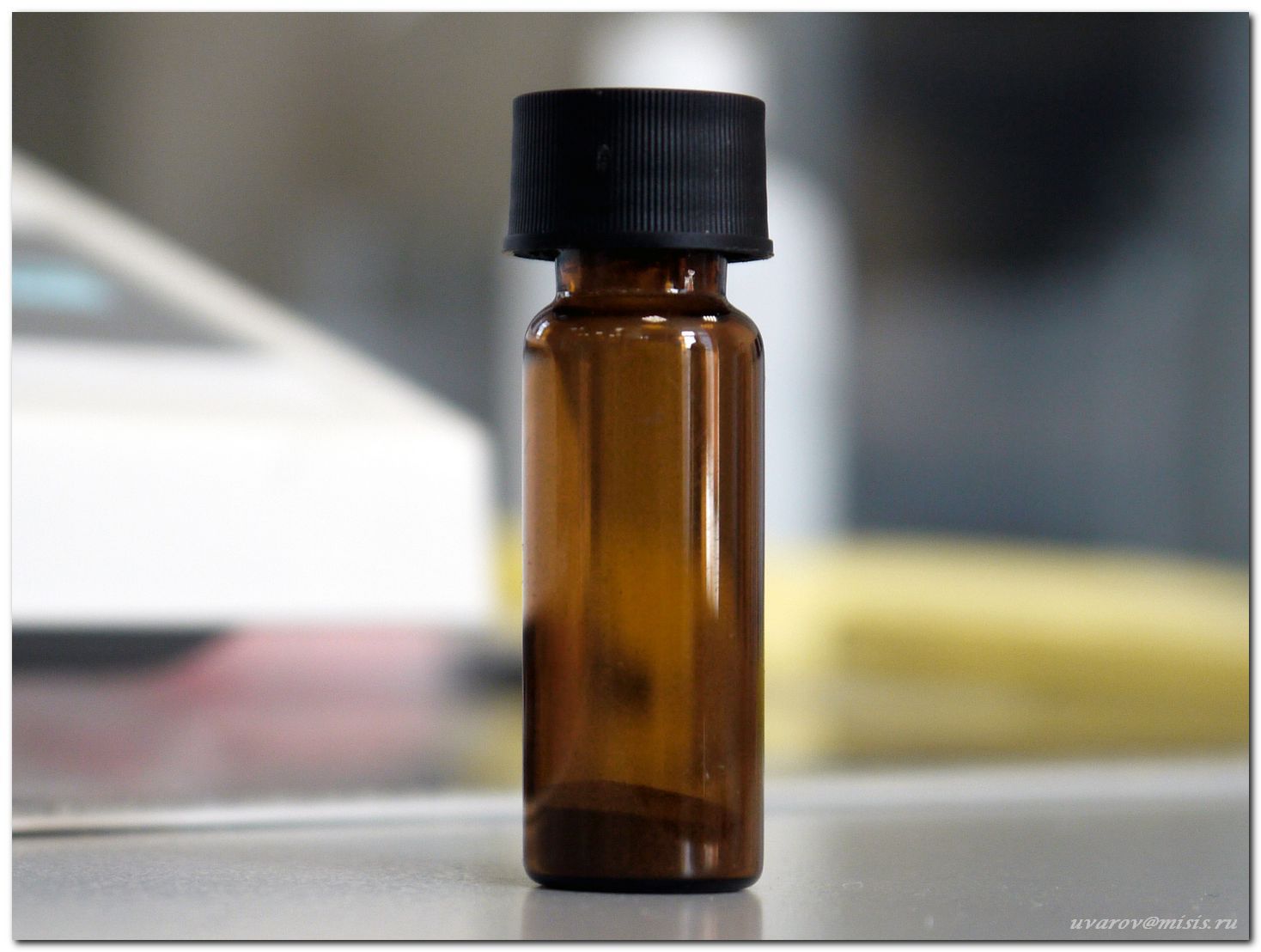

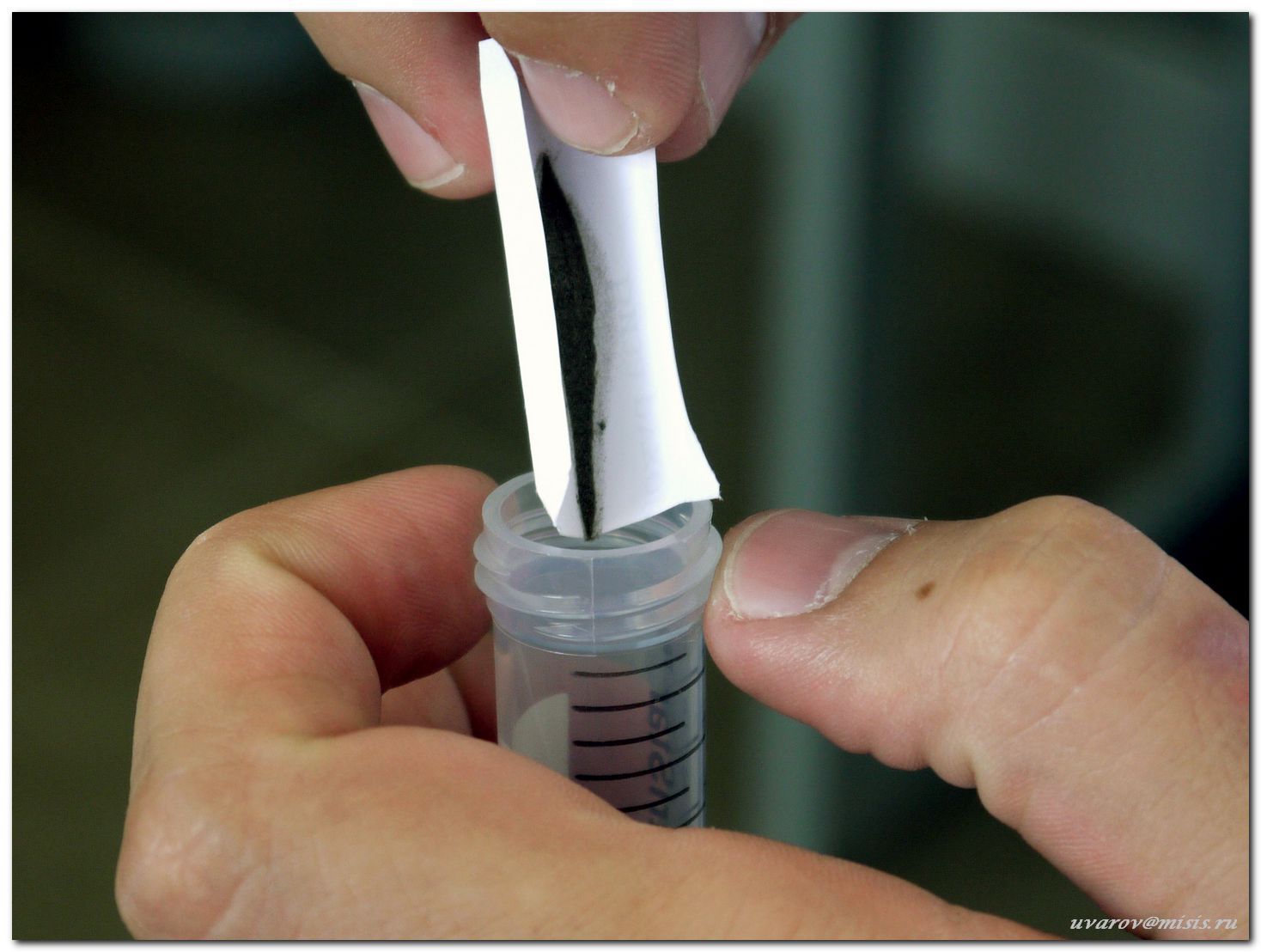
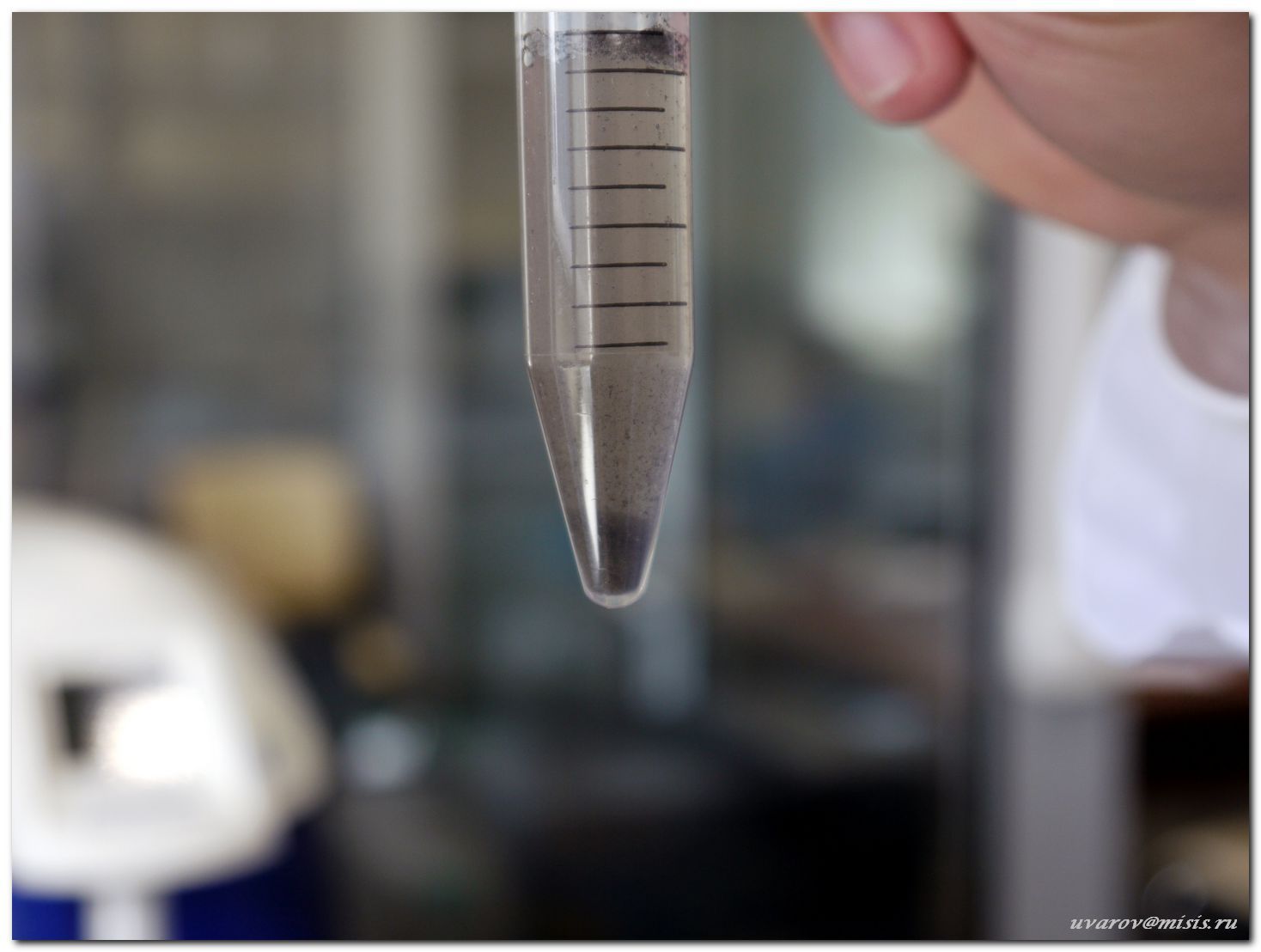
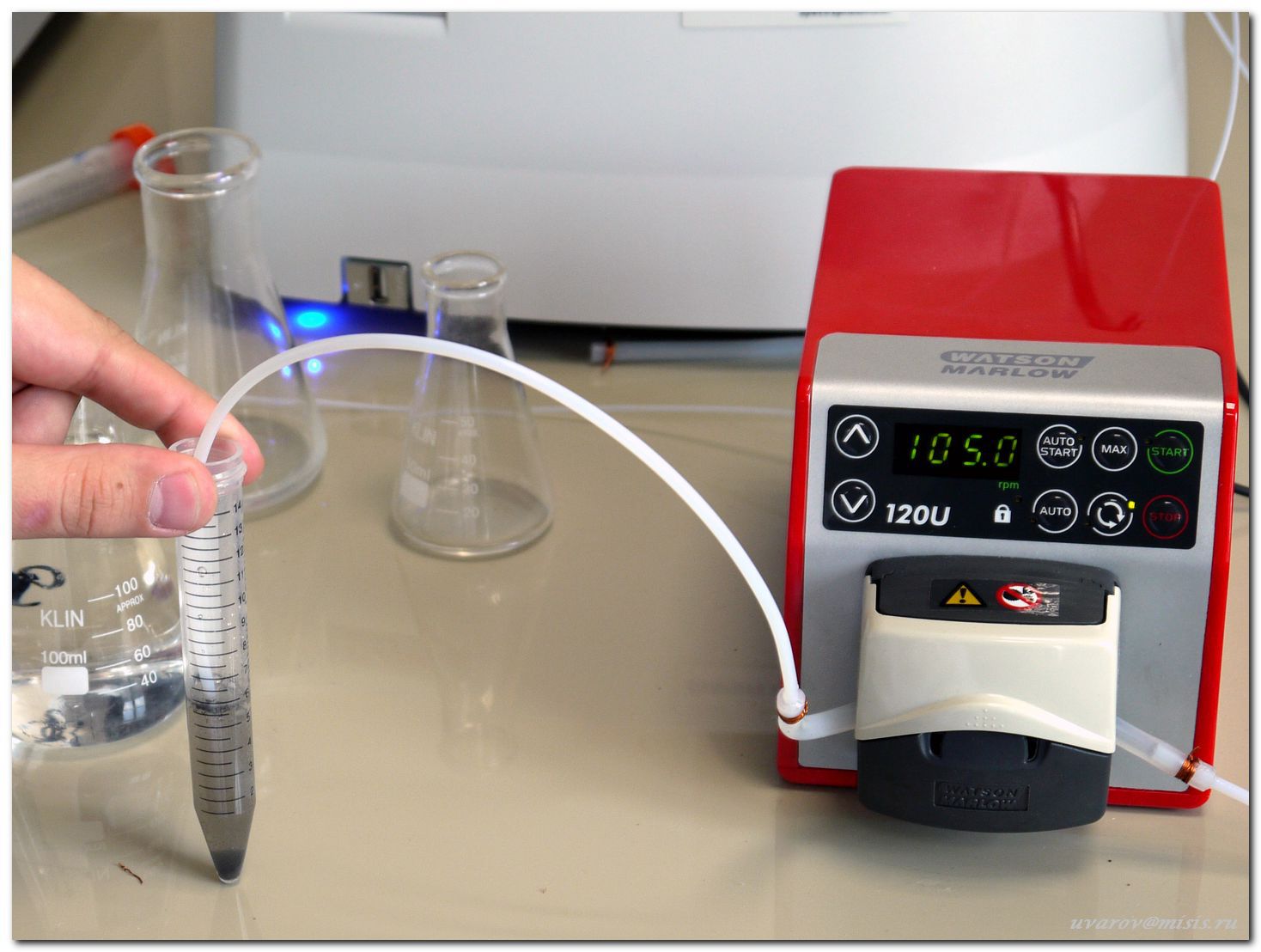
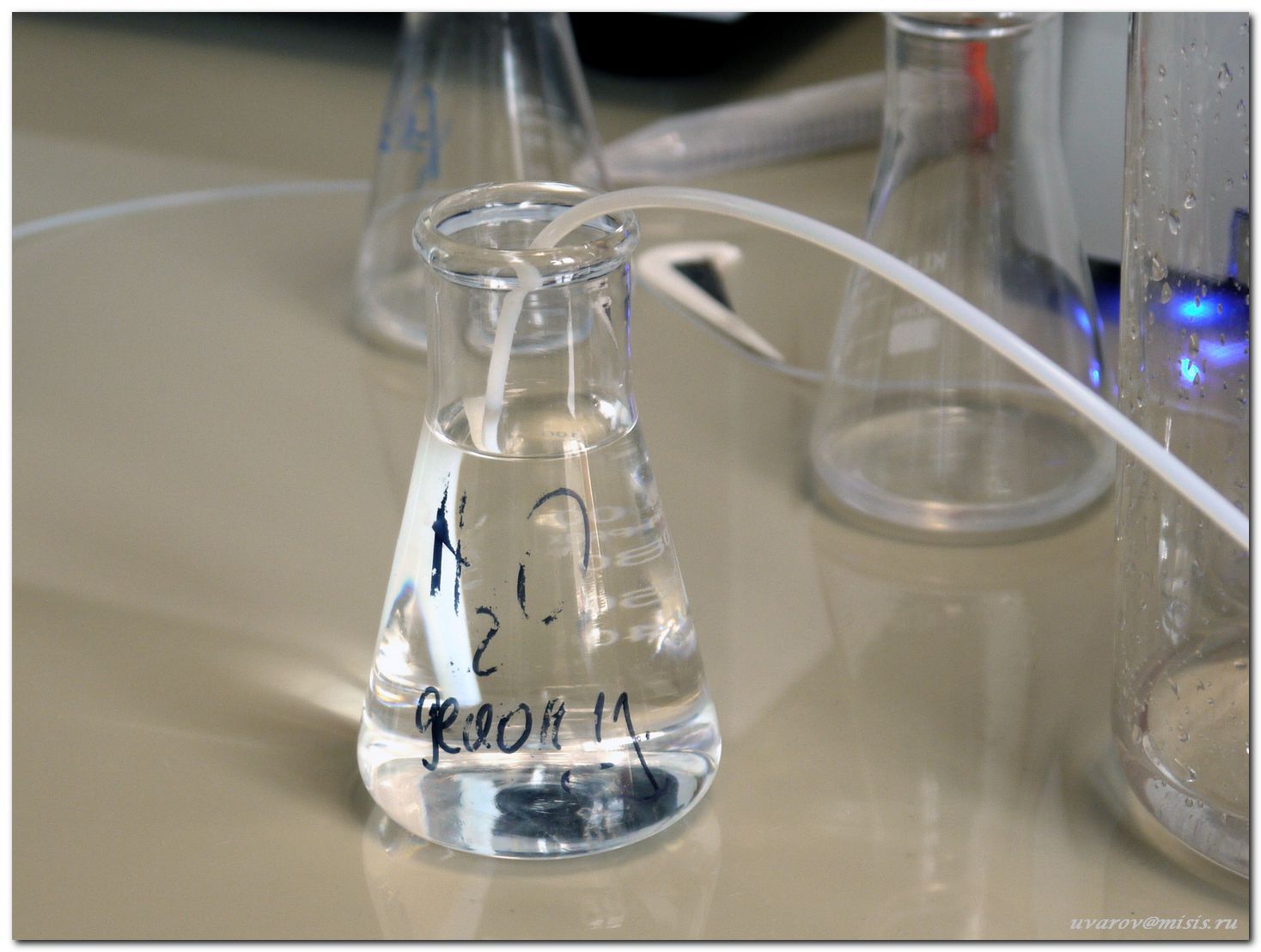
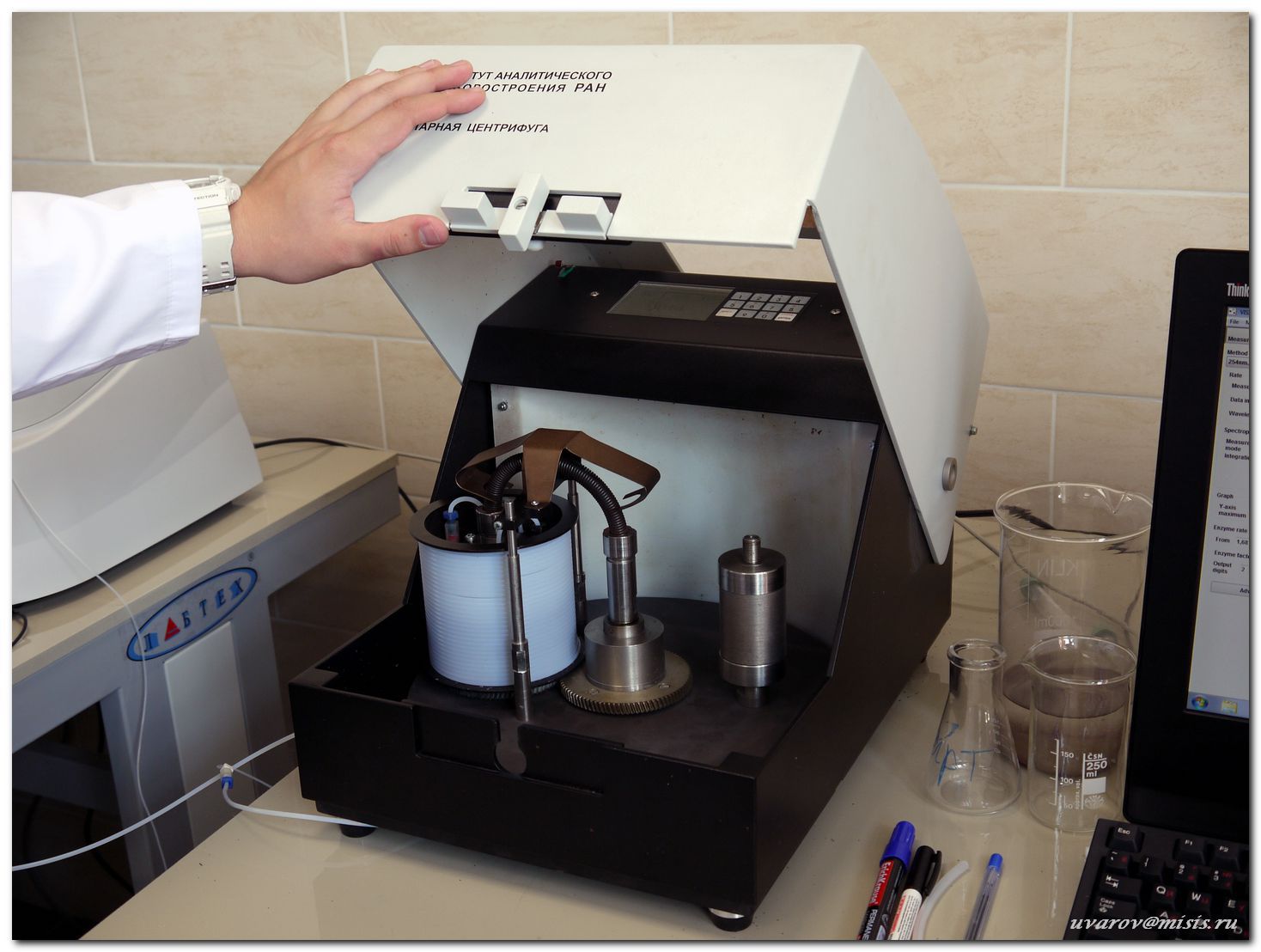
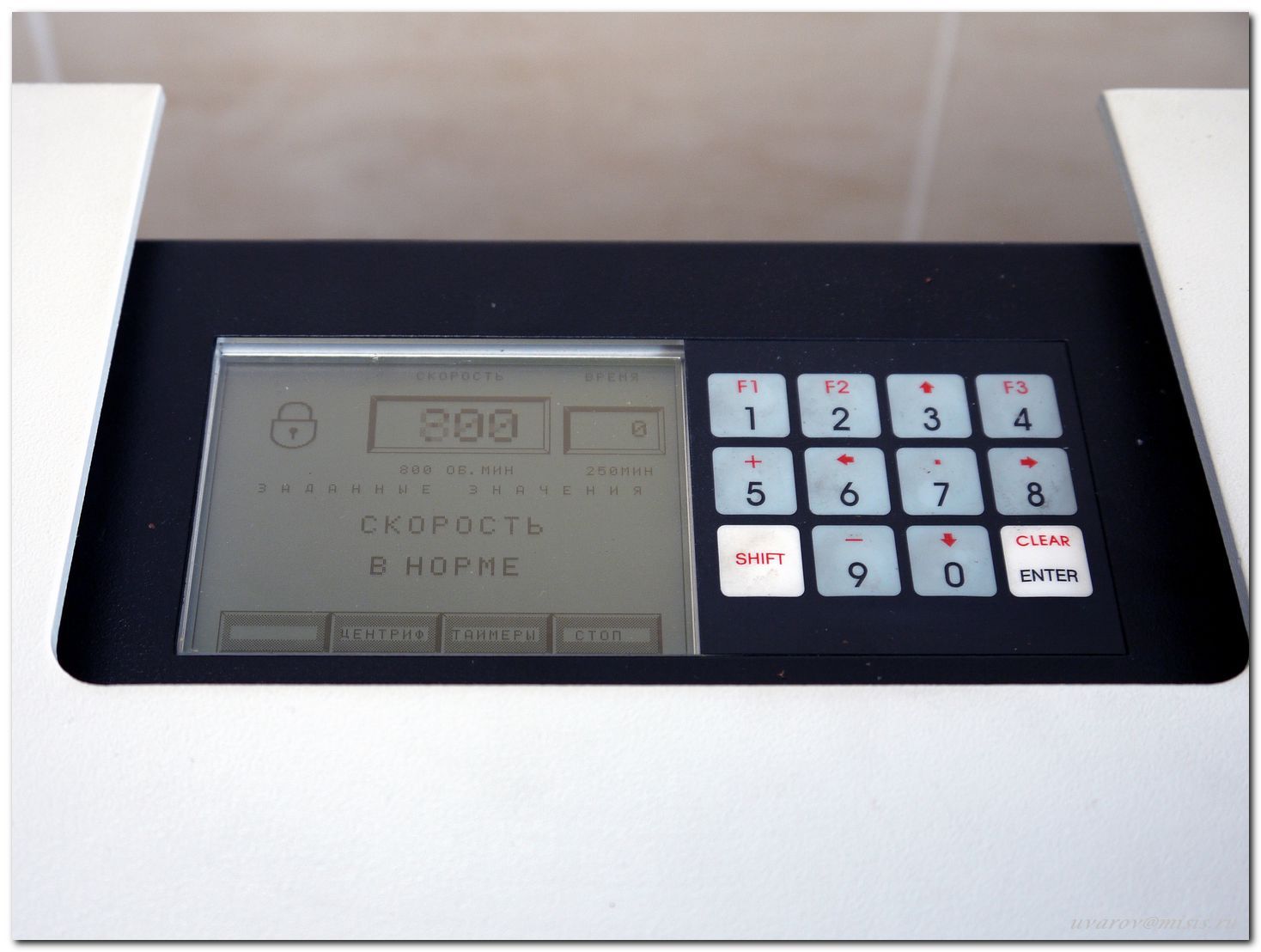
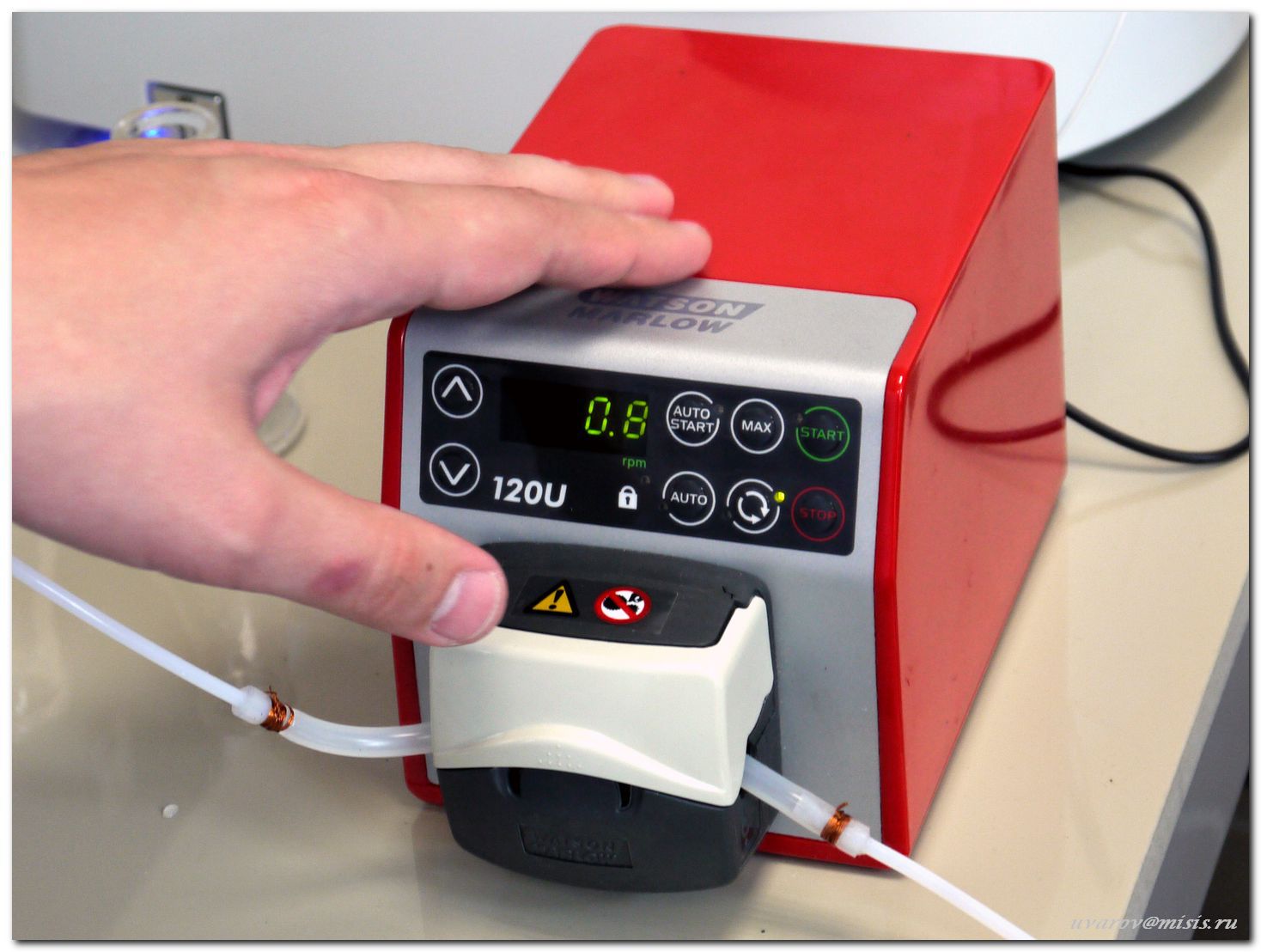
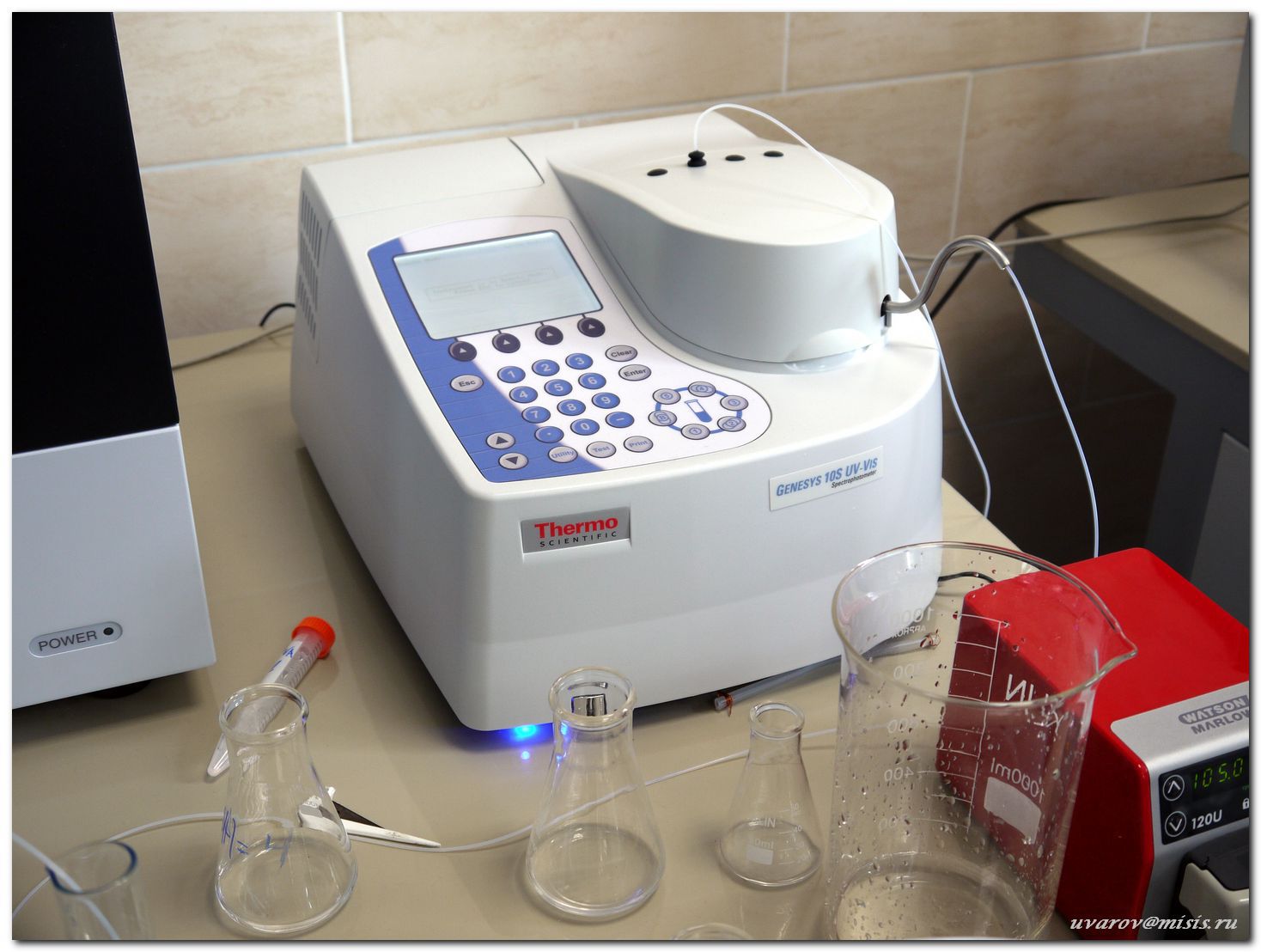

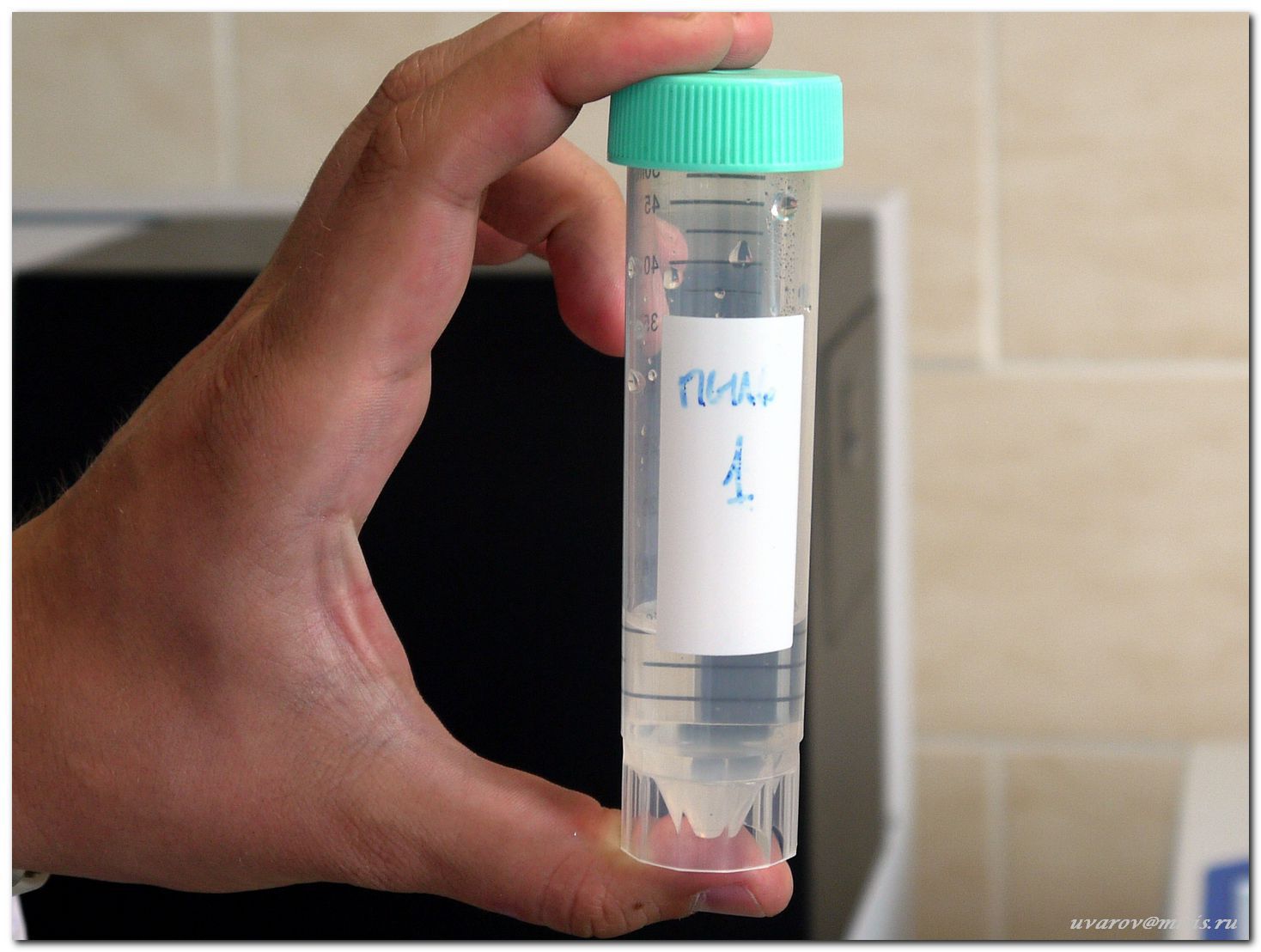

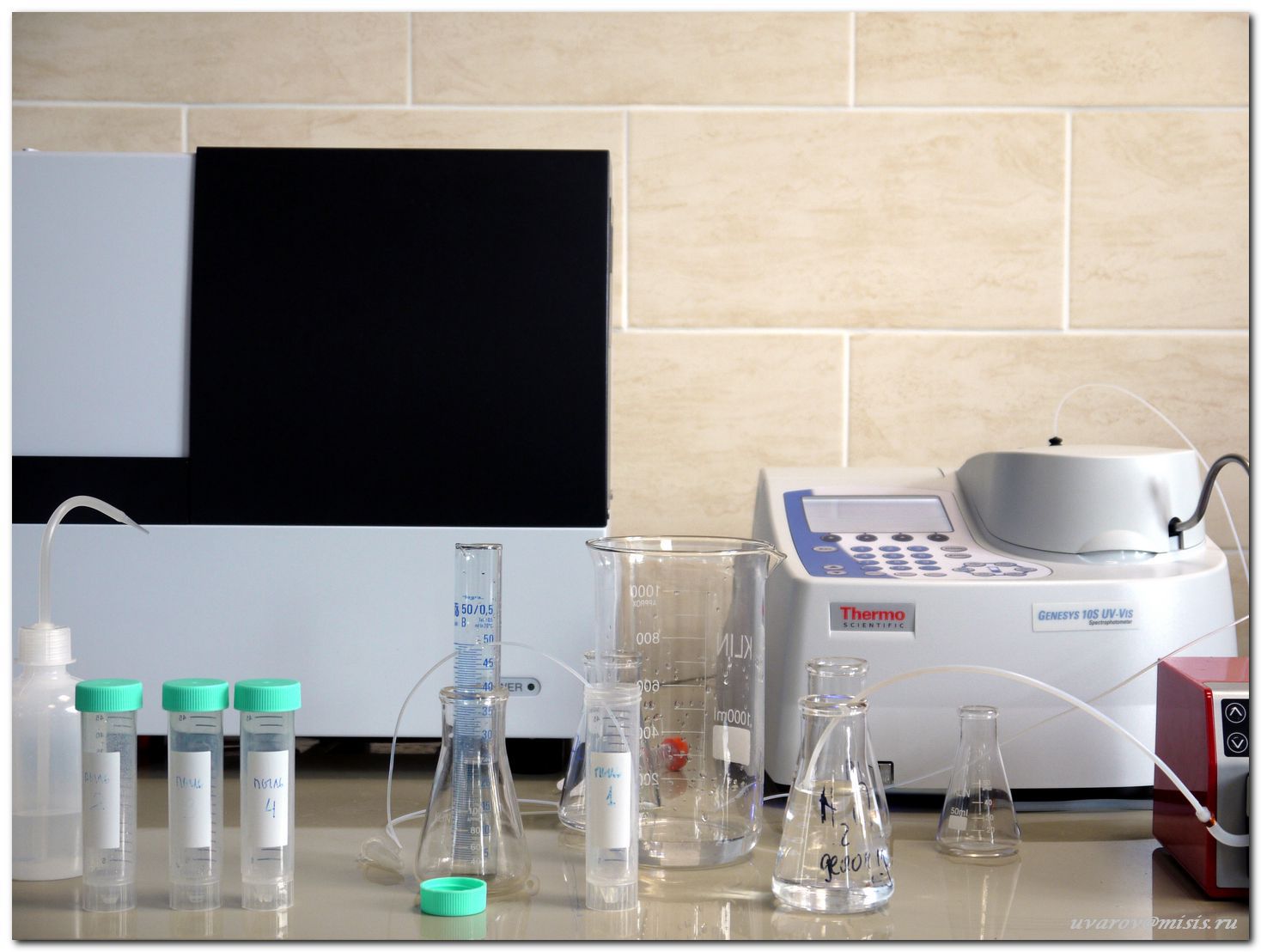
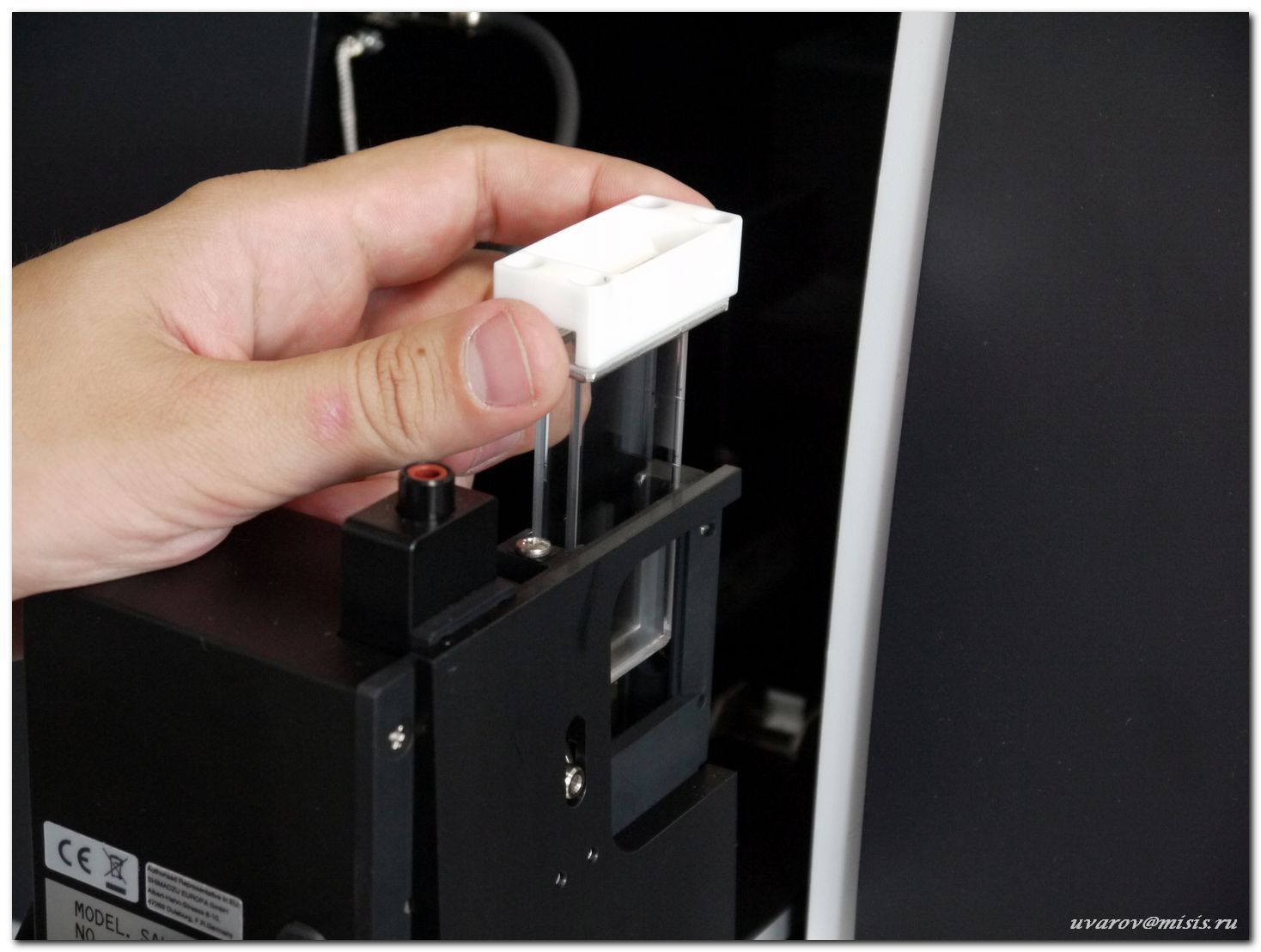
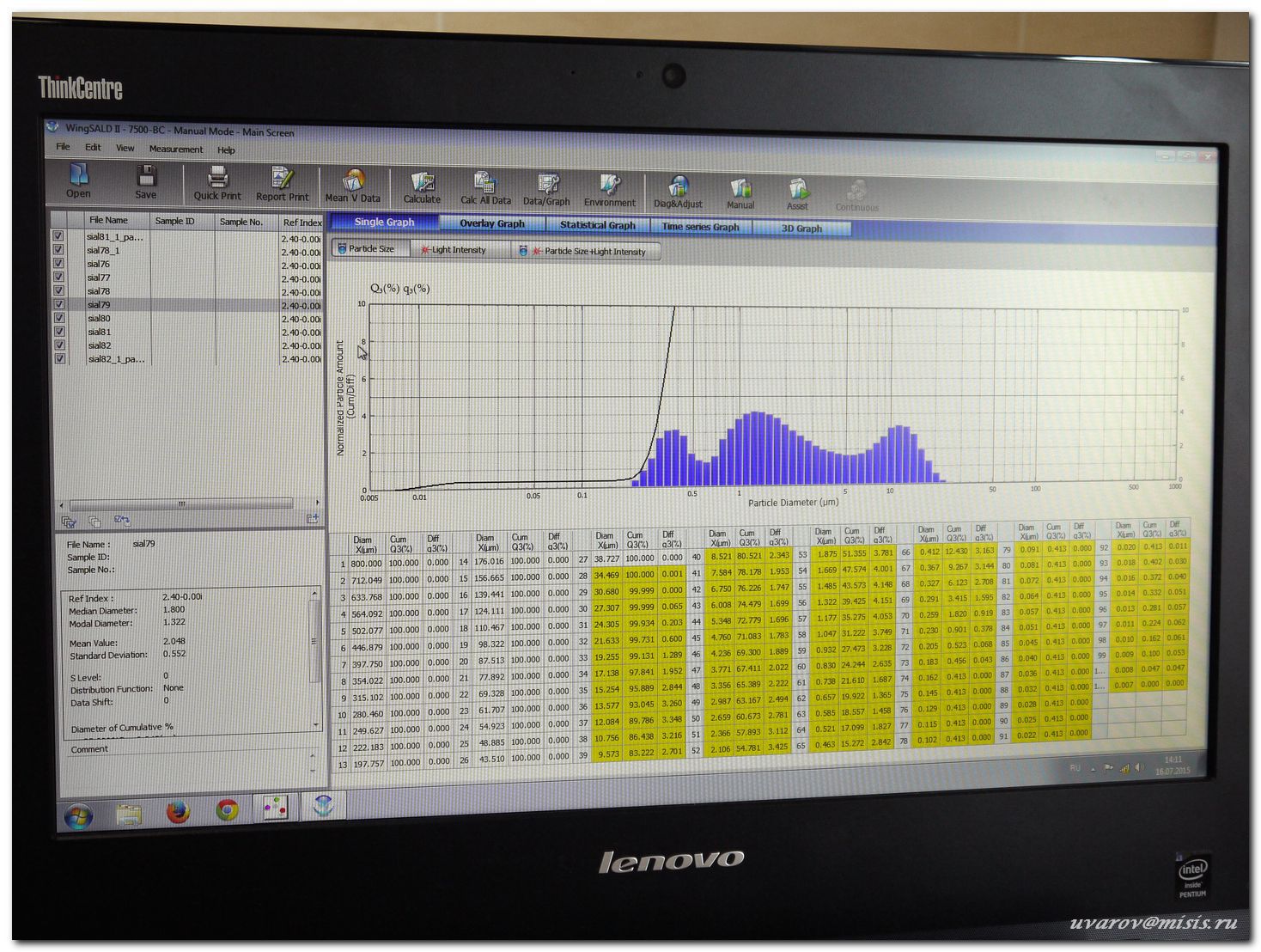
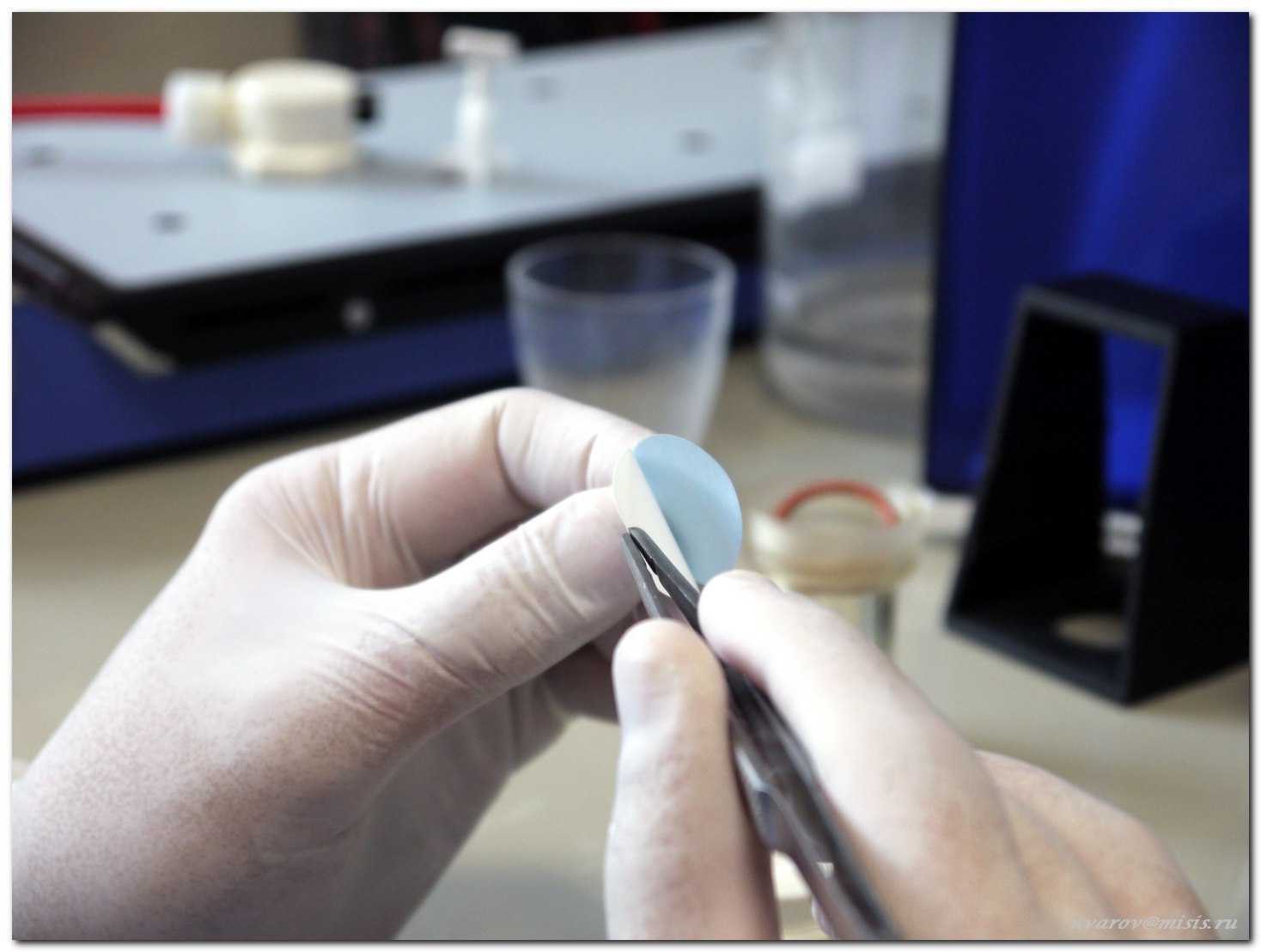

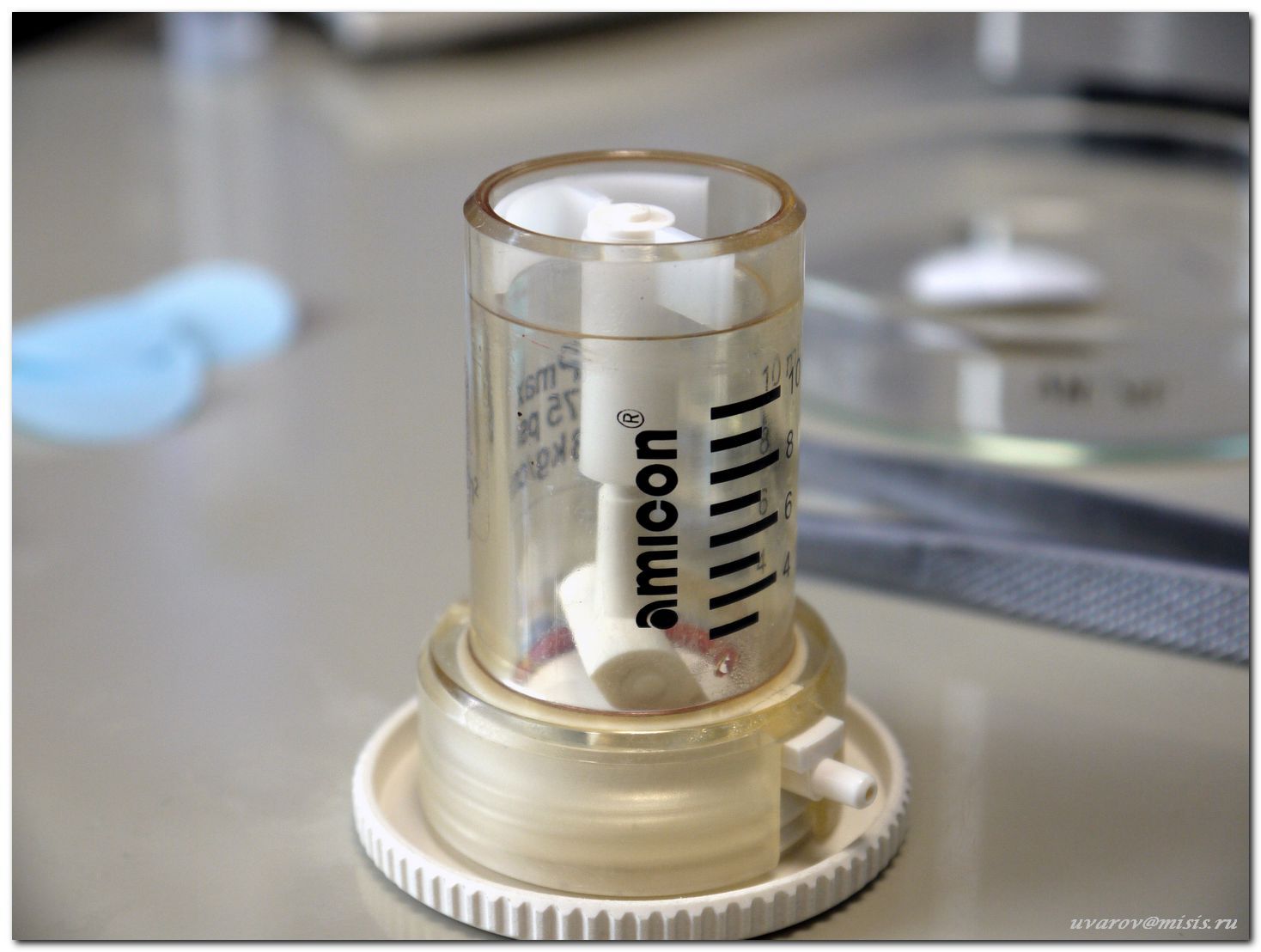
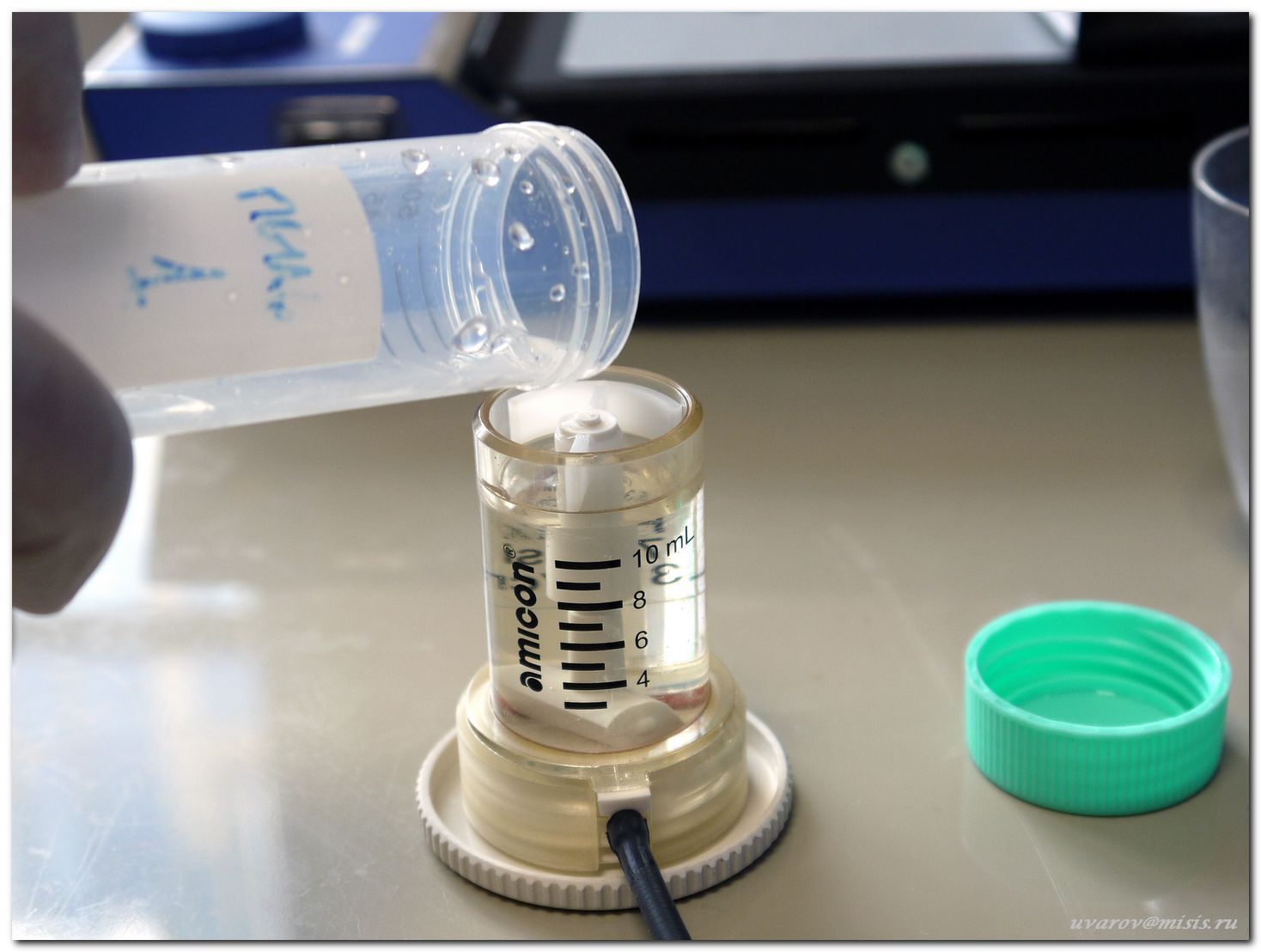
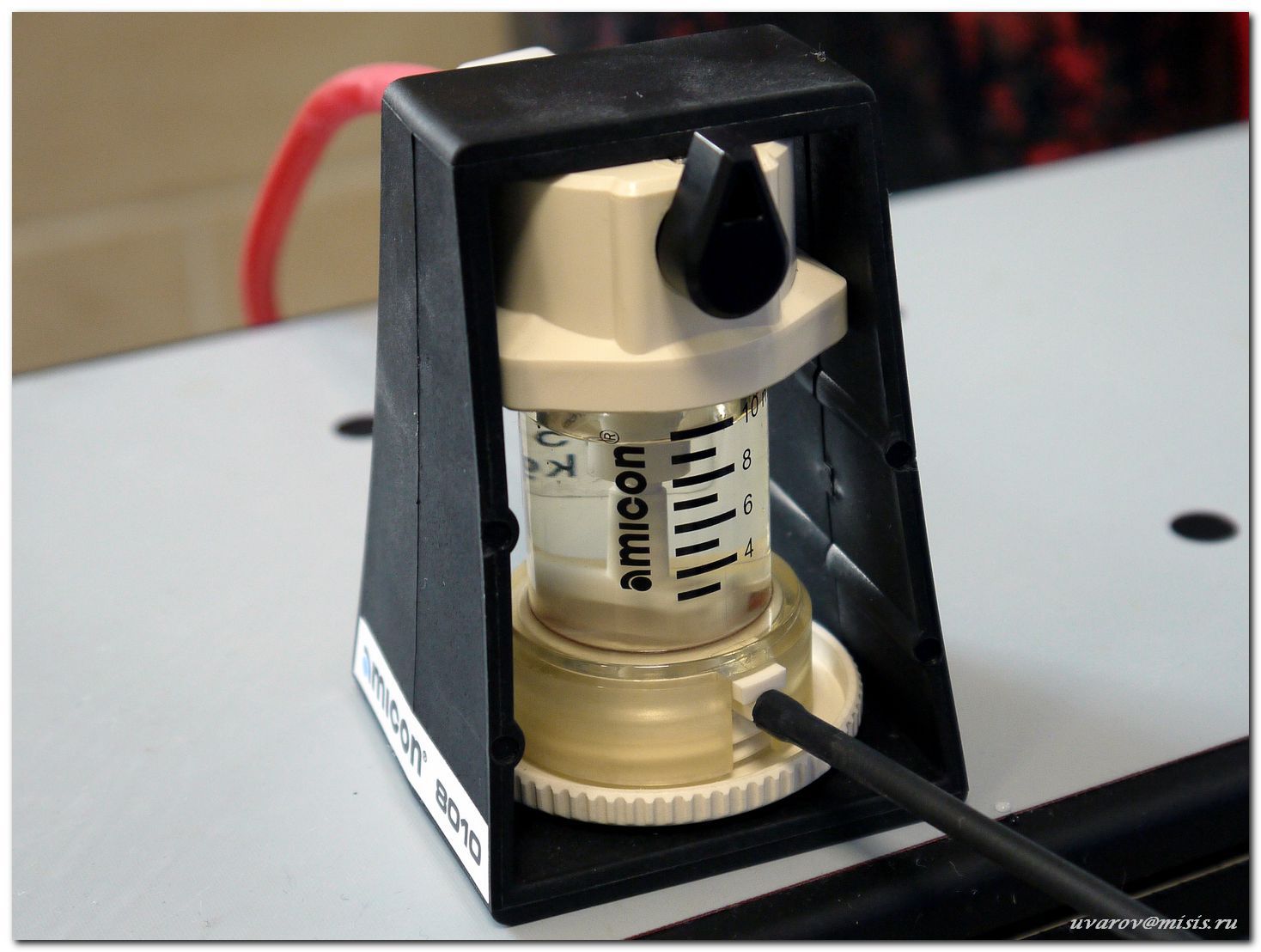
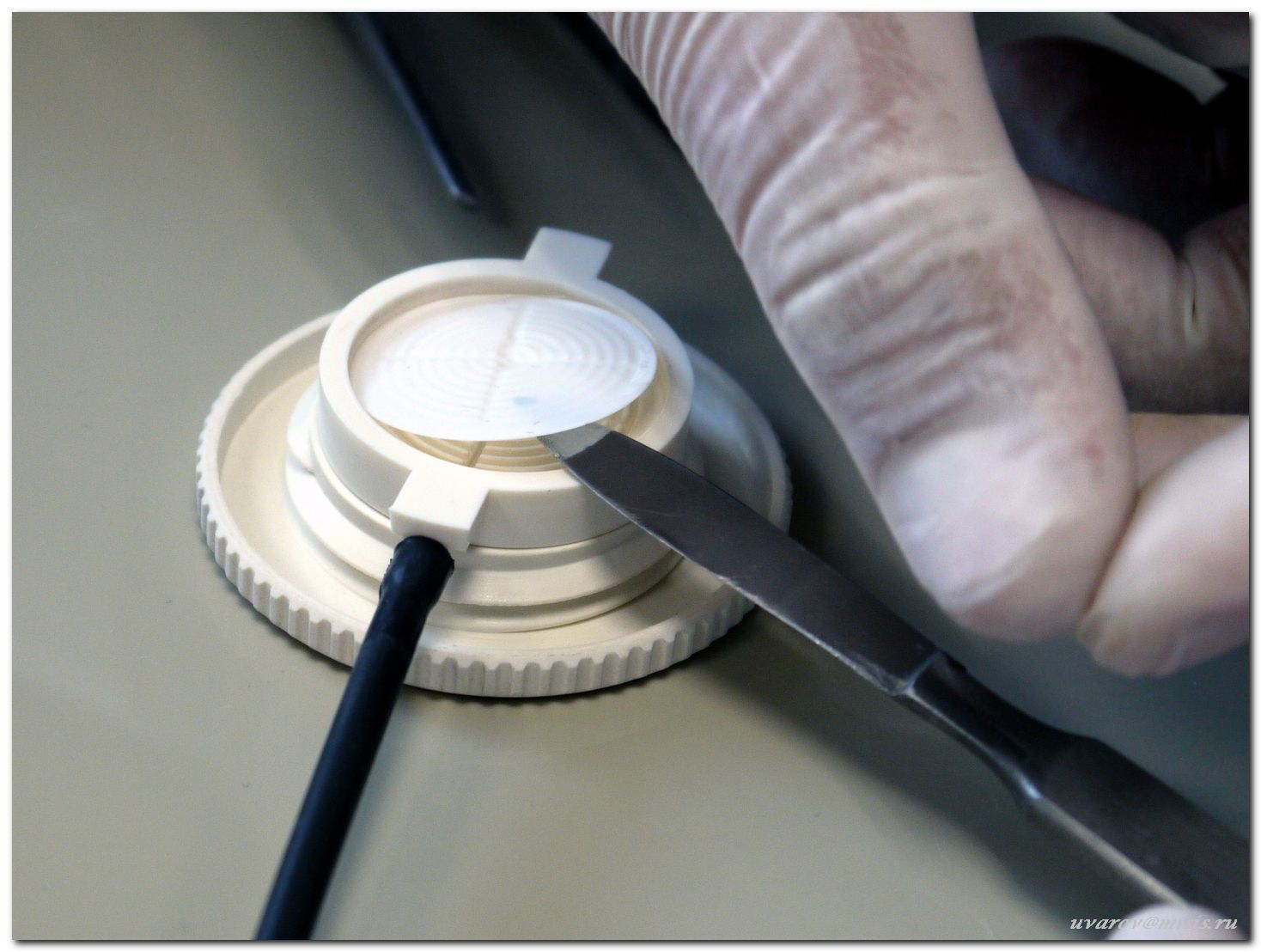
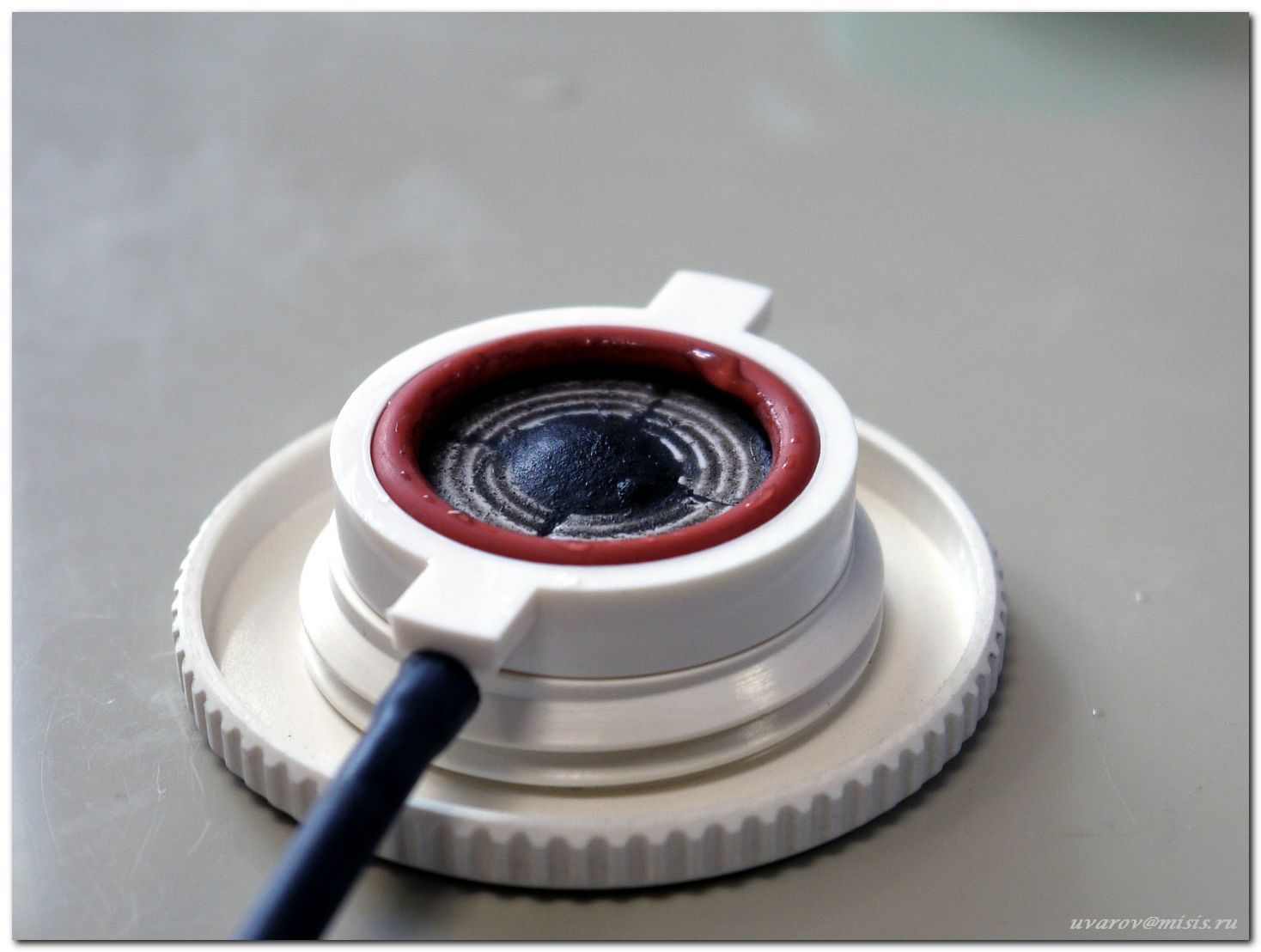
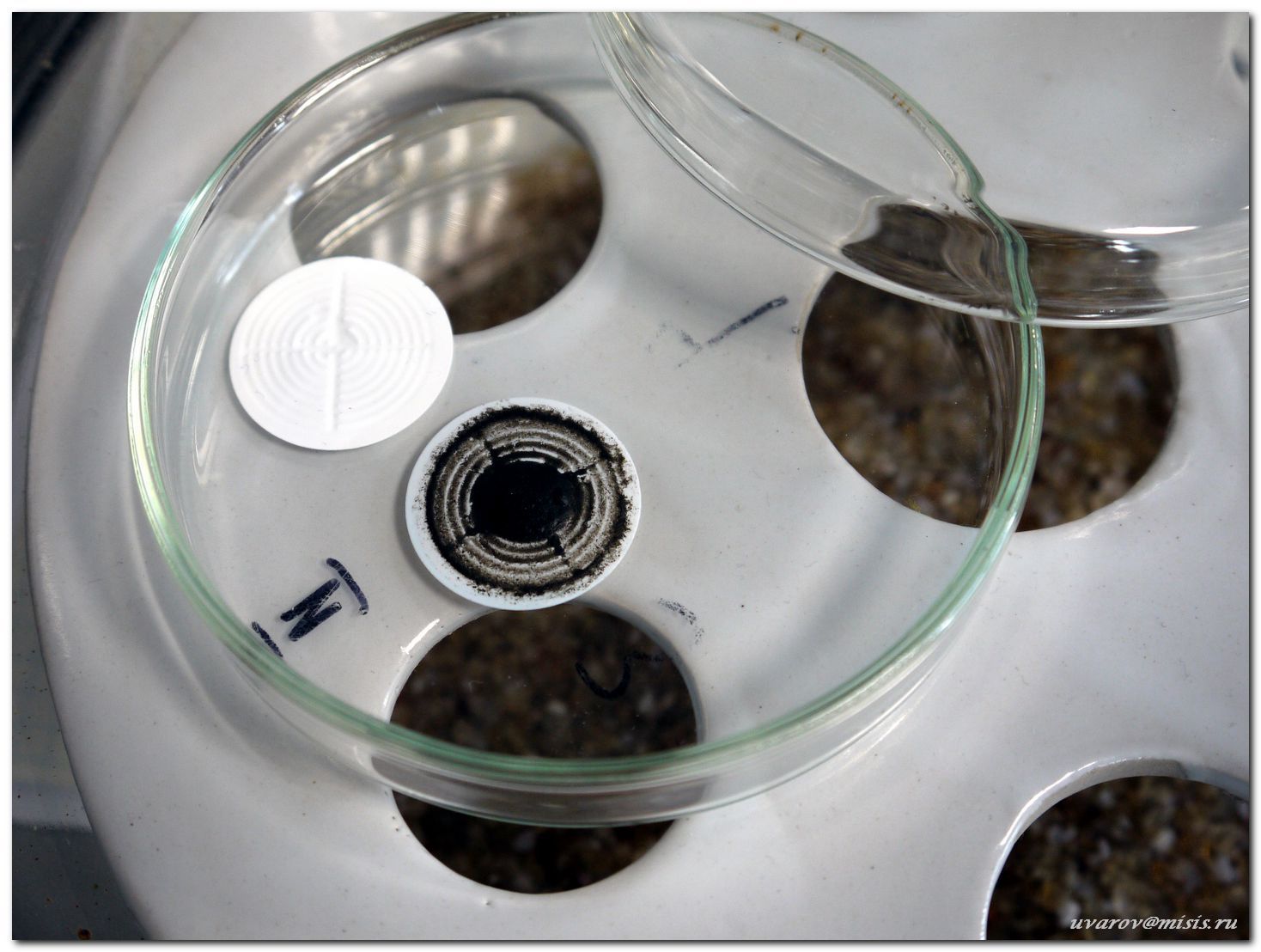

In the next publication, we will describe how the analysis of the extracted dust nanoparticles by the method of mass spectrometry with inductively coupled plasma!
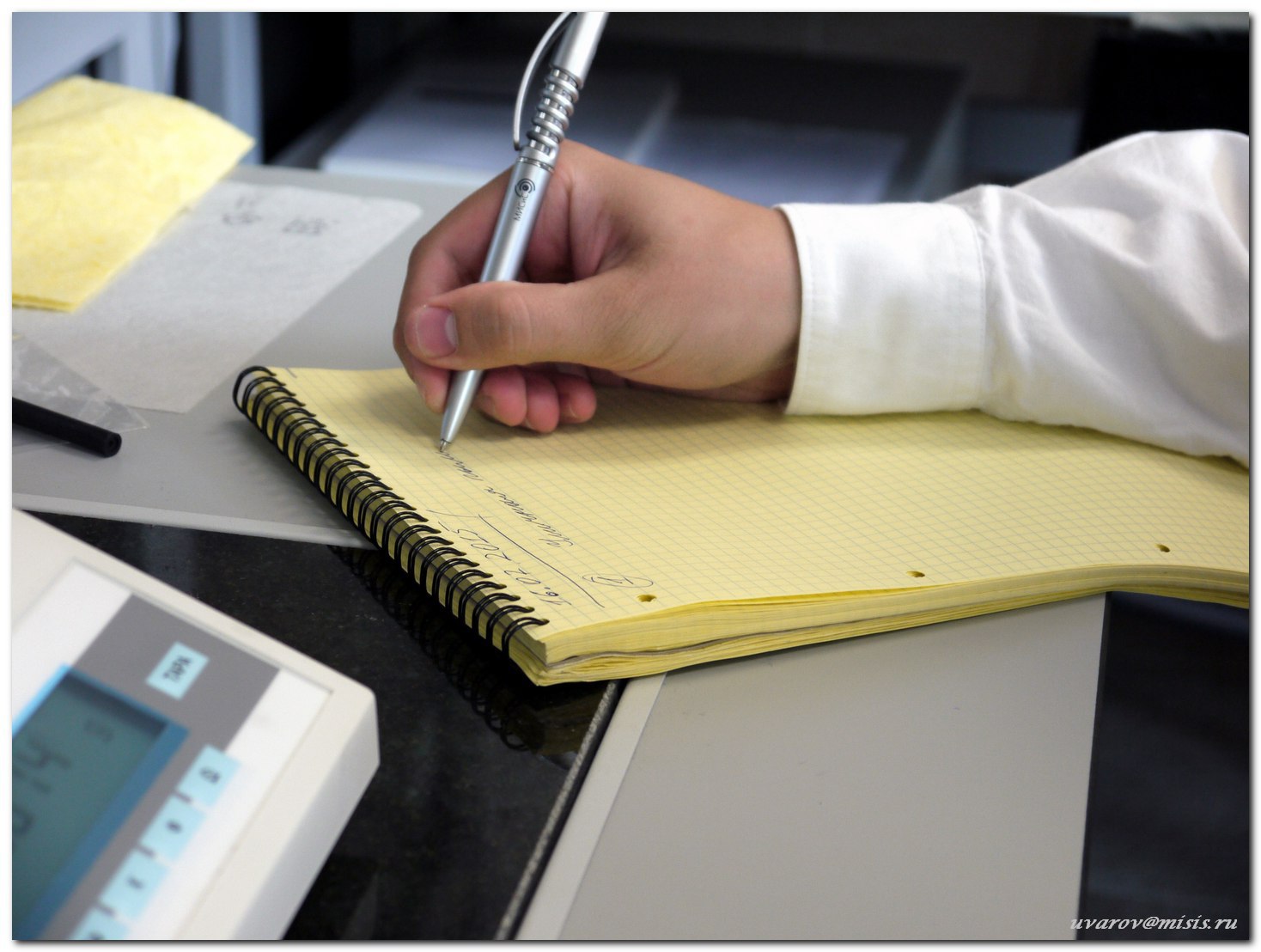
We have prepared a large photo report, which in stages tells about the method of extraction of dust nanoparticles , with a capture of each stage of the experiment and the comments of the senior researcher at the laboratory, Mikhail Ermolin . Michael also gave an expert commentary, which outlines the essence of the method. At the end of this publication, you will find a comment by a graduate student on the need for the application and relevance of this method.

About Laboratory
The laboratory for the separation and concentration of trace elements, micro- and nanoparticles for the development of combined methods for the chemical diagnostics of functional dispersed materials and environmental objects (RKHD FMiOOS) was created in NITU "MISiS" under the project TOP 5-100 under the guidance of a leading scientist P.S. Fedotova .
The main goal of the creation of the laboratory is the development of new highly efficient methods for the separation of trace elements, micro- and nanoparticles using the sorption processes and flow fractionation in a transverse force field at NUST “MISiS”, as well as the development of combined methods for the chemical diagnostics of functional dispersed materials and environmental objects.
The main tasks are:
1. Development of a fundamentally new analytical technology proposed by a leading scientist - the method of fractionation of nano-, submicron, and microparticles of technological and natural samples in a transverse force field in a rotating spiral column of an original design for their subsequent elemental and material analysis.
2. Creation of combined chemical-atomic-emission, chemical-atomic-absorption and chemical-mass spectral methods of inorganic analysis with improved metrological characteristics.
3. Development of methods for elemental and material analysis of fine particles of technological samples (including functional powder materials) and environmental objects (soil, dust and ash) using the proposed separation and concentration methods.
 Fedotov Petr Sergeevich Doctor of Chemical Sciences, Head of the Laboratory "RKHD FMiOOS" NUST "MISiS" Leading Researcher, GEOCHI RAS |
| In the hands of the scientific team there are fundamentally new approaches and methods to solve the above problems. These include - a unified methodological approach to the analysis of substances and materials, covering all stages of the process, including sample preparation, separation, concentration, metrological support, processing of results, sharing of complementary methods; the development of a new highly effective method for the separation of trace elements, micro- and nanoparticles, based on the use of rotating spiral columns; development of new organic sorbents specific for various materials based on non-ferrous, precious and rare metals; and, finally, a combination of the developed separation methods with such modern analysis methods as mass spectrometry, atomic spectroscopy, |

 Mikhail Ermolin Candidate of Chemical Sciences Senior Researcher at the Laboratory “RKHD FMiOOOS” NUST “MISiS” |
| Nanoparticles have existed in the environment for centuries in dust, soil, ash, etc. Despite this, their properties, mobility, and toxicity are still poorly understood. The main reason for this is the difficulty of isolating them from complex polydisperse samples of the environment, and the currently used particle separation methods do not allow one to isolate weighted amounts of fractions of nanoparticles for subsequent study and quantitative analysis. Head of the laboratory RKHD FMiOOS NITU "MISiS" Fedotov P.S. An original method was proposed for the flow fractionation of particles in rotating spiral columns, traditionally used in countercurrent chromatography, which has unique capabilities for separating polydisperse samples of the environment and isolating weight quantities of fractions of nano-, submicron, and microparticles. Particle fractionation in a rotating spiral column occurs in a long capillary in a continuous flow of carrier fluid under the action of a complex asymmetric field of centrifugal forces arising from planetary rotation of the column. Fractionation and analysis of street dust particles is extremely important for studying the binding of toxic elements to various particle size fractions of dust, assessing their mobility in the environment, as well as potential risks to human health. |
An experiment to study the binding of toxic elements to various particle sizes of street dust begins with the preparation of a sample of a dust sample. For fractionation of dust particles in the VSK weighed 100 mg.


A sample of the dust sample is dispersed in 5 ml of deionized water by simple shaking.


The resulting suspension is then introduced into the VSK using a peristaltic pump. After that, the end of the capillary is washed with deionized water and lowered into a vessel with deionized water, which is a mobile phase in the separation of particles.


After the dust sample is introduced into the column, the VSC is rotated. The fractionation of dust particles in the VSC is carried out at a rotation speed of a planetary centrifuge of 800 rpm.


Upon reaching the required speed of rotation of the column, turn on the pump to create a continuous flow of the mobile phase. Elution of dust particles at the exit of the VSC is detected using a spectrophotometer equipped with a flow cell.


After the free volume of the column is released, the finest dust fraction begins to be washed out, as a rule, these are particles up to 200-300 nm in size. The fraction is collected in a separate tube.


Subsequent fractions of dust particles are selected with a stepwise increase in the feed rate of the mobile phase.


The granulometric composition of the selected fractions is studied by static light scattering.


Further, to study the binding of toxic elements with various particle size fractions of dust, the separated fractions are deposited on membrane filters with a pore size of 50 nm, previously adjusted to constant mass in a desiccator over silica gel.



Filtration cells are used for precipitation. Filtration takes place under a pressure of 2 bar.


After sedimentation of particle fractions on the membrane filters, the filters are removed from the filtration cell and placed in a Petri dish for subsequent drying.


A Petri dish with particles deposited on the filters is placed in a desiccator and dried until a constant mass is achieved for two days.


After drying, the filters are weighed, the mass of particles in each fraction is determined, after which the filters are decomposed in an acid mixture in an autoclave and analyzed by inductively coupled plasma mass spectrometry.
 Alexander Ivaneev Laboratory Assistant Laboratory “RKHD FMiOOOS” NUST “MISiS” |
| As a result of economic activity, serious, in some cases irreversible, environmental changes often occur, the result of which is a significant deterioration in human health and the depletion of natural resource potential. Street dust is an environmental object that requires special analytical control. The results of studies conducted over many years in Russia and abroad have proved that dust particles are a danger to the human body. Important factors affecting human health are not only the chemical composition of the particles, but also their size. It is worth noting that dust particles smaller than 1 μm in size pose the greatest threat to human health, since they are able to remain in the atmosphere for a long time in suspension, transported over considerable distances, and penetrate into the lower respiratory tract. Isolation and separation of nano- and sub-microparticles, which usually make up tenths of a percent of the mass of dust, is a difficult task. Using preparative centrifuges, this is not possible. The sedimentation method, which is widely used for fractionation and study of soil and dust samples, allows you to isolate and separate fractions of particles larger than 2 microns. Moreover, the separation process is laborious, takes several days and requires the introduction of reagents that stabilize the suspension. The cross-field flow fractionation method in a rotating spiral column has the unique ability to isolate fractions of nano-, submicron- and microparticles of dust samples for their subsequent study and quantitative analysis. The study revealed an uneven distribution of toxic elements between different particle size fractions. It was shown that the content of toxic substances increases with decreasing particle size. The content of toxic elements in the fraction of nanoparticles exceeds their total content in street dust. Thus, the currently used methods of analytical control of dust are not sufficiently reliable in assessing its toxicity. |

